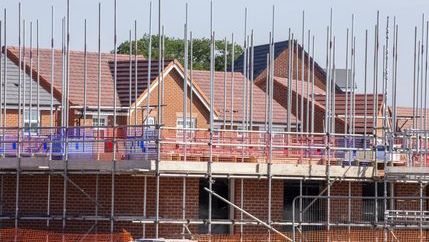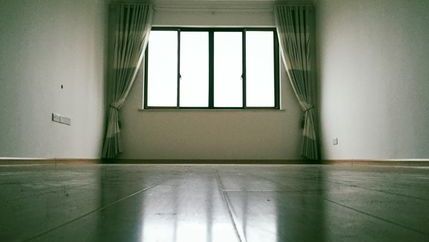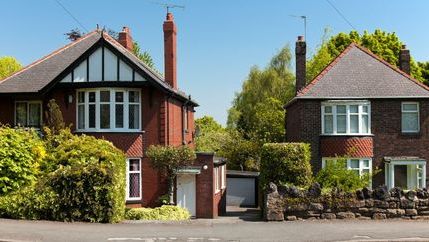
Why change is needed
The Right to Buy scheme has led to a significant reduction in the number of social homes, with an average net loss of 24,000 properties per year since 1991. Meanwhile, demand has spiralled, leaving nearly 1.3 million people on the social housing waiting list and over 117,000 households in temporary accommodation.
Homes are leaving the social sector far more quickly than they are being replaced, and the discounts currently offered can lead to properties being sold for less than the cost of construction, making the scheme financially unsustainable and deterring councils from investing in new builds.
As a result, many lower-income households have been pushed into the private rental sector (PRS), driving up demand and rents. In our latest Housing Insight Survey, our members reported that there are seven applicants per available property on average. The cost of housing benefit has also risen due to people renting privately following the loss of social homes.
Increasing the minimum qualifying period
Currently, an individual must have a secure tenancy and have spent at least three years as a public sector tenant before they can access the RTB scheme.
We agree with the proposal to raise this qualification period to a minimum of 10 years to more effectively target the scheme at tenants who have lived in and paid rent for their home for many years. This will ensure the discount doesn’t exceed the amount collected in rents and exclude applicants who are looking to exploit the system by gaining a social housing tenancy and then buying it at a significant discount.
Homebuyers should only benefit once
Propertymark believes there should be a restriction on the number of times an individual can benefit from RTB, as the scheme is intended to provide a stepping stone to get tenants onto the housing ladder. Owning another property or using RTB again in the future would undermine the aims of the scheme.
Furthermore, we urge the UK Government to make other pathways to homeownership available to prospective homeowners who do not have access to the benefit of social housing, who are not eligible for the Right to Buy, or who have previously benefited from the scheme.
It is also right that eligibility for the scheme should be reserved for those who would otherwise not be able to save for a deposit, such as single-adult households. Other households, such as those who have large, combined incomes, have alternate opportunities to secure homeownership and should not be seeking to exploit this scheme.
Amending the percentage discounts
Percentage discounts currently range from 35% to 70% of the property value for houses and 50% to 70% of the property value for flats. There is also a maximum cash discount, which acts as a backstop to avoid excessive discounts in high-value areas.
The UK Government has already announced a reduction in maximum cash discounts to between £16,000 and £38,000 (depending on the area), which it says will decrease RTB sales by around 25,000 over 5 years, better enabling councils to replace homes sold.
The current consultation proposes to amend percentage discounts to better align with the new maximum cash discounts and that the same percentage discount rules would apply for flats and houses. The discount would increase by 1% for every extra year that an individual has been a public sector tenant, up to the maximum, to ensure that those tenants that have contributed the most rent over the years receive the highest level of discount.
Considering additional exemptions
The Ministry for Housing, Communities and Local Government (MHCLG) intends to keep the current exemptions from the RTB scheme, which include properties owned by co-operative housing schemes or charities and specialist housing such as developments tailored to older people or those with physical disabilities.
Feedback is sought on additional exemptions for newly built properties and homes which have been retrofitted or improved to a high standard. Propertymark advocates permanently excluding all newly built social housing to ensure that there is sufficient social housing stock in the sector and to prevent Local Authorities from losing money where the discounted sale price is less than the cost of construction.
For substantially retrofitted or improved homes, we believe an exclusion should apply for at least 10 years to protect council investments and to achieve parity with households who have not had work done on their property.
Increasing restrictions on properties after sale
We agree that councils should have the right to ask for repayment of all or part of the discount received on the purchase of a council property if it is resold within 10 years rather than the current five.
This supports the aim of discouraging early resales and profiteering, as well as ensuring homeownership is sustainable. The measure will also help to ensure the RTB scheme is financially sustainable in the longer term.
Introducing targets for replacing homes
Propertymark strongly supports the view that homes sold under Right to Buy should be replaced on a one-for-one basis, but not necessarily like-for-like. We urge the UK Government to allow local councils the flexibility to build the right type of homes to meet the needs of their community.
For example, if there is more demand for one-bedroom properties where a four-bedroom house was sold, then consideration should be made to build new one-beds with the RTB receipt.
However, we do not think that the time limit to spend receipts should be increased. The current five-year term is reasonable for Local Authorities to develop replacement properties. To support this, appropriate grants, resources and capacity must be made available for councils to complete developments within the five-year period.







